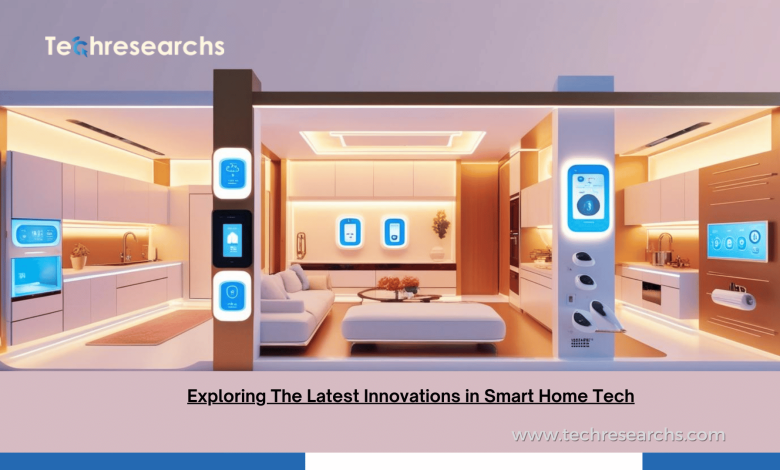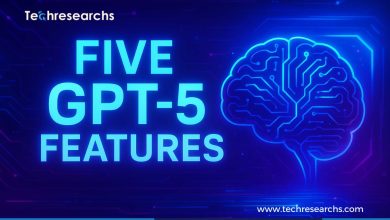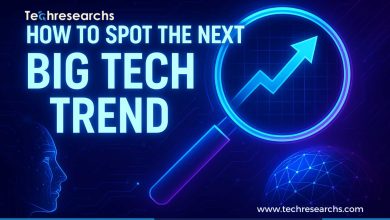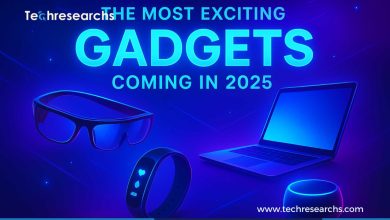Exploring The Latest Innovations in Smart Home Tech

In recent years, smart home tech has revolutionized the way we interact with our living spaces. These technologies, which range from intelligent lighting to AI-powered assistants, have enhanced convenience, security, and energy efficiency. In this article, we’ll explore the latest innovations in smart home tech that are transforming homes into more efficient, automated environments.
What is Smart Home Technology?
Smart home technology refers to a collection of devices and systems that allow homeowners to control and monitor various aspects of their homes remotely. From security systems and lighting to HVAC and entertainment, smart home tech encompasses devices that are connected to the internet and can be controlled through smartphones, voice assistants, or automation. With innovations in smart home tech, the possibilities for creating a connected, efficient, and personalized living space have expanded dramatically.
Latest Innovations in Smart Home Tech
1. Voice-Controlled Smart Home Devices
One of the most significant advancements in smart home tech is the integration of voice control through virtual assistants like Amazon Alexa, Google Assistant, and Apple Siri. These voice-controlled devices allow users to manage everything from lighting and temperature to security systems with simple voice commands. With machine learning and AI, these assistants are continuously learning from user interactions, making them more intuitive and responsive over time.
2. Smart Lighting Solutions
Gone are the days of manually adjusting your home’s lighting. Smart lighting systems have revolutionized how we illuminate our homes. With features like color-changing bulbs, automated schedules, and remote control capabilities, smart lighting solutions offer a new level of convenience. Brands like Philips Hue and LIFX lead the way in offering customizable lighting that can adapt to your mood or daily routines.
3. AI-Powered Home Security Systems
AI-powered home security systems are becoming an essential part of modern smart homes. These systems use artificial intelligence to detect unusual activity, recognize faces, and even predict potential security threats. Advanced cameras, motion sensors, and doorbell cameras integrated with AI are constantly improving in accuracy, ensuring the safety of your home. With smart alerts sent directly to your phone, you’ll always be aware of what’s happening around your property.
4. Smart Thermostats and Energy Efficiency
Innovations in smart home tech have made it easier than ever to manage energy consumption. Smart thermostats, like the Nest Learning Thermostat and Ecobee, allow homeowners to adjust the temperature of their home remotely and even automatically optimize settings based on patterns of usage. These devices help reduce energy waste by learning your preferences and adapting to your habits.
5. Automated Cleaning Systems
Robotic vacuum cleaners like the Roomba have been around for some time, but recent innovations in smart home tech have taken these devices to new heights. These intelligent cleaners can map out your home’s layout, detect dirt and debris, and even empty their dustbins autonomously. By integrating AI, robotic vacuums can now avoid obstacles, clean more efficiently, and be controlled through voice commands or mobile apps.
6. Smart Kitchens: The Future of Cooking
The kitchen is another area of the home benefiting from smart home tech innovations. Smart appliances, such as refrigerators, ovens, and coffee makers, are becoming increasingly popular. For example, smart refrigerators can monitor expiration dates, create shopping lists, and even suggest recipes based on the ingredients inside. Smart ovens can be preheated remotely, and cooking times can be adjusted via smartphone, making meal prep easier than ever.
The Role of Artificial Intelligence in Smart Home Innovations
Artificial intelligence plays a critical role in smart home tech by enabling devices to learn and adapt to the habits of homeowners. AI enhances automation by predicting user needs and optimizing home systems accordingly. From smart thermostats that adjust room temperatures to AI security systems that analyze surveillance footage, AI continues to drive the future of smart homes.
Benefits of Smart Home Technology
Smart home innovations provide numerous benefits, such as:
- Increased Convenience: Automate routine tasks like adjusting lighting, temperature, and security settings.
- Improved Security: Smart security systems offer real-time alerts, facial recognition, and remote monitoring.
- Energy Savings: Smart thermostats and lighting can reduce energy consumption by learning and adapting to usage patterns.
- Enhanced Comfort: Voice assistants, smart appliances, and automated cleaning systems provide comfort and ease of use.
Challenges and Considerations
While smart home tech offers numerous advantages, there are also some challenges to consider. Privacy and security concerns remain prevalent, as these devices collect data on your activities. Additionally, the integration of various devices can sometimes be complicated, and ensuring compatibility between different smart home platforms can be difficult.
The Future of Smart Home Technology
As the smart home tech industry continues to grow, we can expect even more exciting innovations. Advancements in 5G, IoT, and AI will enable faster, more reliable connections between devices, enhancing the functionality of smart homes. The development of more personalized systems, such as mood-sensing lighting and adaptive security, will make homes smarter, more efficient, and increasingly user-friendly.
FAQs About Smart Home Technology
Q1: What is the best voice-controlled smart home device?
A1: Popular choices include Amazon Echo, Google Nest Hub, and Apple HomePod. These devices integrate with a wide range of smart home technologies.
Q2: Are smart thermostats worth the investment?
A2: Yes! Smart thermostats can save money on energy bills by learning your preferences and automatically adjusting settings based on your schedule.
Q3: Can I control my smart home devices remotely?
A3: Absolutely! Most smart home tech can be controlled remotely through apps on your smartphone or via voice commands.
Q4: How secure are smart home security systems?
A4: Modern AI-powered home security systems are equipped with encryption and features like facial recognition for added protection.
Innovations in smart home tech are reshaping how we live, offering enhanced convenience, security, and energy efficiency. With advancements in AI, IoT, and voice control, the future of smart home technology looks incredibly promising. Whether it’s through smart lighting, automated cleaning, or advanced security, these technologies are making our homes more comfortable and secure.



